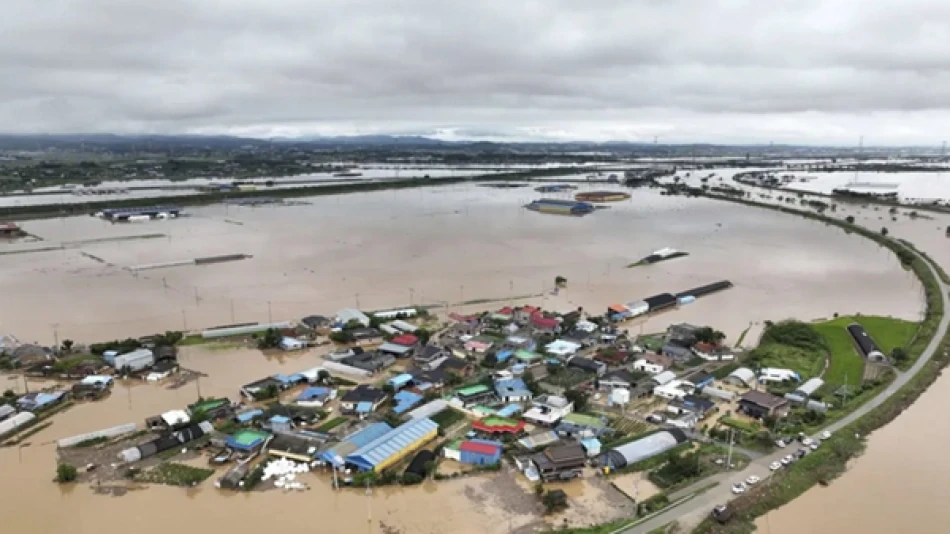
Torrential Rains in Korea Force Thousands to Seek Shelter in Evacuation Centers
South Korea Faces Deadly Deluge as Record Rainfall Forces Mass Evacuations
South Korea is grappling with its most severe flooding crisis in recent memory as unprecedented rainfall exceeding 400mm in 24 hours has killed at least four people and forced over 5,000 residents into emergency shelters. The three-day downpour represents a stark reminder of how extreme weather events are intensifying across East Asia, with potential ripple effects on the region's manufacturing and supply chains.
Unprecedented Rainfall Batters Southern Regions
The Ministry of Public Administration and Security reported that southern regions bore the brunt of the extreme weather, with some areas recording rainfall levels that shattered historical records. The 400mm threshold—equivalent to nearly 16 inches of rain in a single day—represents roughly a quarter of Seoul's average annual precipitation compressed into 24 hours.
The scale of the emergency response underscores the severity of the situation, with thousands of residents evacuated from their homes as floodwaters overwhelmed drainage systems and triggered widespread infrastructure damage.
Weather Warnings Extend Crisis Timeline
Korea's meteorological agency has maintained heavy rainfall warnings across most western and southern regions, with the crisis expected to persist through Saturday. Officials have issued urgent advisories about landslide and flood risks, suggesting the worst may not be over.
The extended timeline of this weather event distinguishes it from typical summer rainfall patterns in the region, where intense but brief downpours are more common during monsoon season.
Regional Climate Patterns Signal Broader Trend
This extreme weather event fits into a troubling pattern of intensifying precipitation across East Asia. China recently experienced similar flooding that disrupted major industrial centers, while Japan has faced increasingly severe summer storms in recent years. The frequency and intensity of such events suggest climate change is fundamentally altering regional weather patterns.
South Korea's mountainous terrain makes it particularly vulnerable to flash flooding and landslides, especially in densely populated areas where rapid urbanization has reduced natural water absorption capacity.
Economic and Infrastructure Implications
Beyond the immediate human toll, prolonged flooding poses risks to South Korea's manufacturing sector, which includes major semiconductor and automotive facilities. Previous flooding events have disrupted global supply chains, given the country's central role in electronics production.
The infrastructure damage reported by authorities could affect transportation networks crucial for both domestic commerce and international trade through major ports like Busan, though specific impacts remain to be assessed as the crisis unfolds.
As climate scientists warn that such extreme weather events will become more frequent, South Korea's experience serves as a critical test case for urban resilience and emergency preparedness in one of Asia's most developed economies.
 Layla Al Mansoori
Layla Al Mansoori







